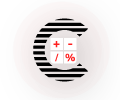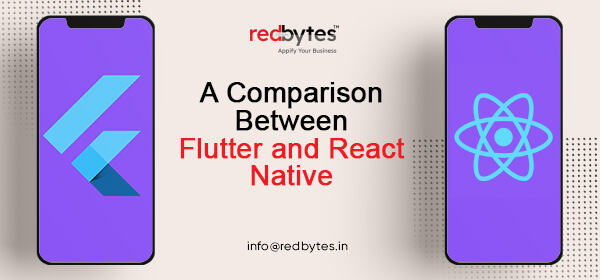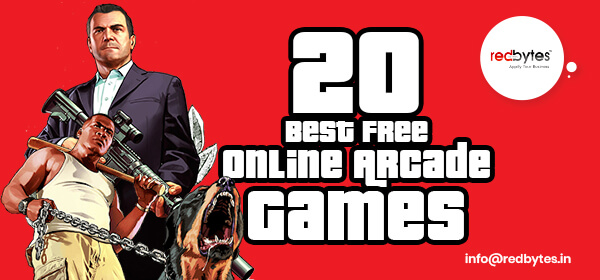To create a successful and contemporary style mobile application that works on all available target platforms, you need equally sophisticated and advanced tools that enable fast, efficient and user-friendly mobile app development.
At present developers are struck by two major options in mobile application development: React Native and Google’s Flutter.

While React Native is around since 2015 and powers famous mainstream apps (Facebook, Skype, Instagram, Bloomberg), Flutter is still a newcomer in the market.
After Google launched Flutter, there have been many discussions raging around which one from React Native and Flutter leads as the best framework for building cross-platform apps.
In this blog, we are going to make an honest comparison between Flutter and React Native.
Introduction To Flutter vs. React Native

React Native open source cross-platform framework was first released in 2015 on GitHub. It unites both Android and iOS native APIs to deliver unquestionable native-like environment and experience for mobile app users.
React Native offers time-tested tools to developers and there is little chance that they choose the newcomer over the established rockstar.
Flutter is another unusual framework developed by Google. It allows Google developers to build high-quality native apps for both iOS and Android simultaneously without changing the code.
For this reason, Flutter seems tremendously promising, productive and fast, and deserves to stand in line with React Native in future.
1) UI Elements
When it comes to defining the UI elements, both platforms have little in common. To form the building blocks for UI, React Native relies on native iOS and Android components or on custom and third-party components. On the other hand, Flutter has proprietary widgets like:
- Material widgets
- iOS-style Cupertino widgets
- Platform-agnostic widgets
Unlike React Native, Flutter’s approach includes fully custom UIs, promising interoperability along with native components and UI screens.
However, the downside to Flutter framework is that its Cupertino library lacks essential elements and components.
React Native clearly emerges as a winner in this as it allows you to easily tap into native OS components to provide admirable user experience.
2) Native Look and Feel
React Native is already an established name for cross-platform mobile app development and has more mature and stable version than Flutter. It is evident that React Native lives to its promise of delivering impeccable native look and feel in its apps.
However, Flutter apps have still not received potentially positive responses on their performance and user experience.
The limited capability of Flutter framework somehow reflects from the fact that Hamilton is the only success story for a renowned mobile app built using Flutter.

Flutter is obviously the new tool and will take some time before the developer community carves unanimous practices needed to deliver undeniable native experience across different platforms.
3) Performance
What gives Flutter a competitive edge over cross platform champion React Native is its agility. From technical perspective, Flutter is comparatively faster because it uses Dart, and unlike React Native, it doesn’t have a JavaScript medium to enable interaction with native components. But even the speed difference does not overshadow the dignified performance of React Native.
According to React Native community of developers, React Native based app development does not experience any performance issues.
On the contrary, RN fans claim that the framework offers smooth operations, dynamic user interactions and reliable solutions to challenges down the road of development.
4) JavaScript & Dart: Face off
JavaScript and Dart are two different programming languages used for React Native and Flutter frameworks respectively.
As for JavaScript, its popularity on GitHub in 2018 is unquestionable. It works seamlessly across the browsers, server and mobile devices and is widely adopted among developers. Web or Node.js developers find it easy to start off with React Native development.
On the other hand, Google’s Dart has unique personality unknown to many in the domain. Due to still-obscure presence, it would be a big gamble for developers to be confident about fully adopting Dart-based Flutter.
It is undeniable, though, that Flutter users did enjoy the perks. Developers who took the leap of faith for Dart admired its potential features. For once, Dart is expressive, type-safe, accurate and involves a brief learning curve for native developers.
Read Also: React Native App Development Company in UK
5) Real-time Apps
Since React Native is an old unforgettable legacy in the world of famous programming languages, it is used to build numerous mainstream applications so far. Some of them are conspicuous brands such as Airbnb, include Airbnb, Skype, Instagram, Walmart, and Tesla.
When it comes to real-time mainstream applications built with Flutter, Hamilton is the only name that graces framework’s success story.
With Hamilton being the only example, the industry adoption of Flutter for now is not significant except perhaps in the coming future as we all expect.
6) Productivity
Mobile app development productivity is an area where both frameworks seem to have found similar strengths. Both allow developers to write for two platforms simultaneously and unshackle them from recompiling the code.
A few great features where Flutter and React Native compete fiercely are:
A) Fast Reloading
Both frameworks enable hot reloading which is furiously fast compared to the way native apps recompile in XCode and Android Studio. Upon reloading the app, you also find yourself on the same screen with forms maintaining the previous input.
B) Tools
React Native obviously contains a huge range of IDEs and tools which gives good enough competition to Flutter. But still Flutter can pride itself on the compatibility with Intellij Idea, Android Studio and Visual Studio. Dart also boasts positive reviews for its linter, debugger, and code analyzer and auto format.
C) Hardware-specific APIs
React Native has built-in APIs for WiFi, Geo sensing and allows for essential third-party API solutions for camera, sensors, Bluetooth, etc. However, the framework lacks API for custom graphics due to which custom graphics in React Native apps will cause unwanted friction with native code.
With Flutter, the situation is different. Many hardware APIs are either in developing stage or readily available. As soon as all hardware-specific APIs are ready for app development, Flutter may beat React Native to an extent.
D) Coding style and experience
In Dart file, you will see no separation between templates, styles or data, which results in an unappealing styling of code. This is not an issue in React Native’s JavaScript programming. This drawback affects Flutter developer’s overall experience and performance.
7) Documentation maintenance
When it comes to comparing both frameworks based on providing clarity and simplicity of online documentation, Flutter seems to intimidate React Native.
React Native has Github blog with monthly updates whereas Flutter maintains a dedicated page in a way expected of a new framework.
Flutter has got an impressive edge over React Native since Flutter documentation is typically how it is supposed to be. React Native documentation appears a little more unkempt and chaotic due to being a large open-source project.
Read also : All You Need To Know About Google Flutter
So who ultimately is the winner?
Despite being emergent, Flutter has everything that makes it a considerable mobile app development tool in future. The framework closely follows UI development model practiced by React Native to deliver rapid, expressive, frictionless and type-safe language.

As discussed above, Flutter also has well-documented resources online and features that are advantageously compatible to the functioning of developers.
In our opinion, Flutter is great but still progressing while React Native is a triumphant champion in 2018!
From comparison, it is evident that both frameworks have unique potential to make vital difference to development process and deliver smooth performance and native look & feel.
The world may not be ready for Flutter because:
- Unfortunately, Flutter is not offering on your plate anything React Native is incapable of
- Hamilton is the only real-time success Flutter carries in its portfolio of mainstream applications
- Since Flutter is so new, it needs to build more traction and trust in the community
- Compared to the massive influence of React Native, it’s too soon to judge what Flutter has in store for future
- Developers who are highly obsessed with React Native don’t ponder over Flutter with seriousness
Only if Flutter gains momentum with more mainstream brands, the framework will be as adored as React Native among app developers.
Looking at the pace at which Flutter is forging ahead, we can just hope that it will also be recognized as a renowned mobile app development tool.
Read also : React Native vs Xamarin – Which is Better?



















